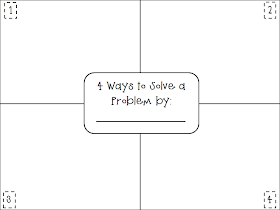I'm linking up with the lovely ladies at Adventures in Guided Math for Chapter 7 of our book study. I have loved this opportunity to reflect on my teaching practice and hear what other teachers have to say. Read all the way through for two little freebies!
If you're following along, here's the schedule:Before I answer any discussion questions, I must say how much the story at the beginning of the chapter hit me. I teach 2nd grade and don't always get a glimpse of what happens in the upper grades when students fall behind grade level proficiency. It is so important to meet kids at their level and teach from there.
One of the biggest things I work on in 2nd grade is place value. It is the very first unit I teach and I spend a great deal of time on it. It is one of the conceptual building blocks for the rest of the year. I can teach students procedures for adding with regrouping but it doesn't help them if they don't understand place value.
I spent so much time last year thinking about how my students solve problems. We were required to give district math tests that were completely open response. We all felt frustrated by the fact that our students could get the correct answer but didn't always have coherent ways of demonstrating how they got an answer and would lose points on the rubric. I have decided that I need to spend much more time having students show their thinking in multiple ways. Our instructional coach showed us a sheet that can be used with any problem, in any grade. I couldn't find it, so I made my own that you can get here for free:
At the beginning, I will have students try one way on their own. After we share different ways, I will have them write down what other students shared. Gradually, they'll work their way up to writing 4 ways on their own. I think this tool would really help facilitate discussions and serve as an informal assessment or exit slip. It is also differentiated because it is open-ended and allows students to work at their level. You could also give different levels of problems based on what students are working on. I really hope this helps students struggle less with describing their thinking this year.






Great freebies! Thanks for sharing... :0)
ReplyDeleteSmiles,
Sarah